Customer support and service teams are on the front lines of the business everyday. They’re often the first to know when something goes wrong in the product, and they can play a critical role triaging those issues with business, product, and engineering teams.
And the demand for customer care is only growing, as leaders grapple with resourcing and training their teams to keep up. Take a look at the numbers. Sixty-one percent of care leaders report growth in the total number of calls their teams manage, while 58 percent expect call volumes to increase, according to McKinsey. Couple that with the fact that onboarding teams is slow (41% of CS leaders in the McKinsey report note it takes three to six months to train a new employee, and 20% say it takes more than six) and that nearly half of surveyed managers said employee attrition was up in the last year and you’ve got a troublesome equation.
As CS teams struggle to keep pace, they’re often stuck navigating disconnected tools, many of which aren’t made specifically for customer support—which makes it even harder for them to effectively meet customers’ needs and deliver optimal results.
Countless CS teams would put a solution that ties it all together at the top of their workplace wish lists, whether it be uniting the channels where customer interactions happen, better tooling connectivity behind the scenes, or both.
But allocating engineering resources to high-overhead, custom-built solutions takes critical development time away from the product. For many companies and dev teams, these options have long seemed out of scope.
What in the world is a support leader to do?
In this article, we’ll explore:
- How developers and support teams can find solutions together
- How easy-to-use customer support and service templates speed up development time
- Why building the right support tools efficiently can keep customers, developers, and CS teams all happy
Consider this: when customer support teams need to bounce between different tools and systems all day—from Zendesk to Jira to Slack to an internal DB and back again—it can add up to a lot of time lost. Multiply the moments it takes to hop around and between tools by an entire team over a day, month, or year. The cost adds up—and it’s way too many opportunities for friction in the customer experience.
For example, the support team at Plaid, the biggest financial services platform, had to perform dozens of manual steps to help customers, which contributed to subpar response times.
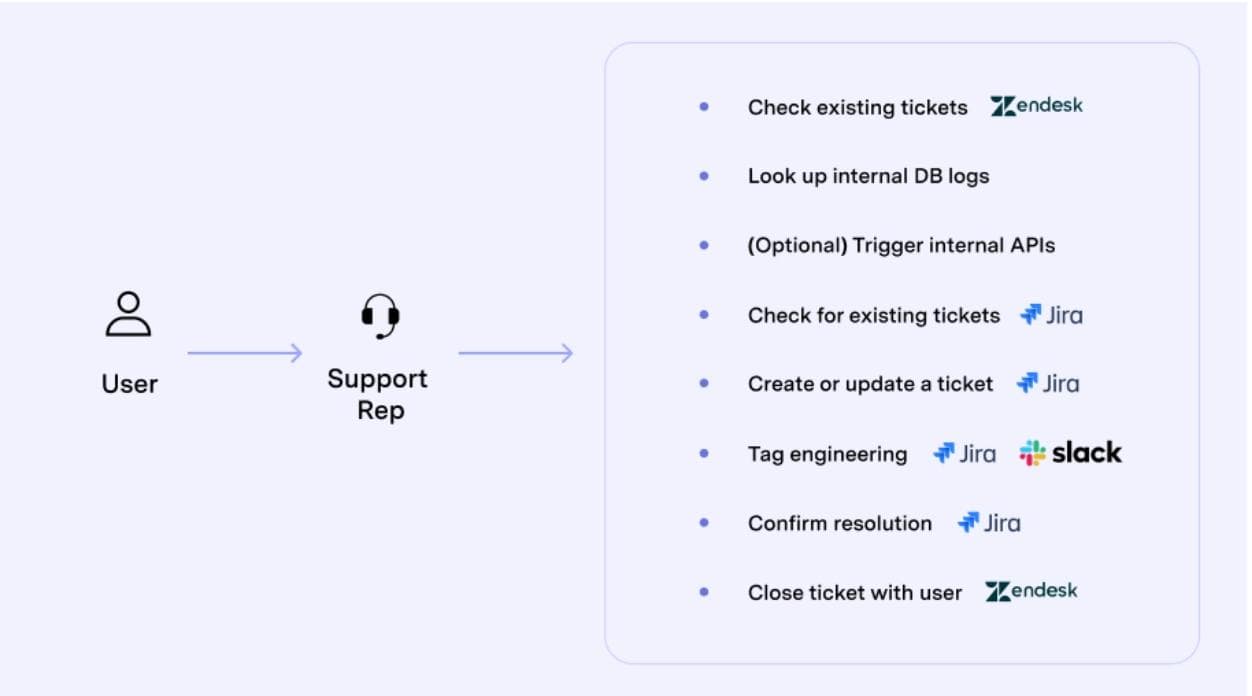
It’s a known-known that devs theoretically can help address this by building custom tooling for CS teams—but equally understood that the opportunity is often misaligned with other product and engineering priorities and building new tooling from scratch comes with complex tradeoffs.
This is solvable. If you reduce the effort and roadmap sacrifices required for developers to help build custom solutions for customer support, you create bandwidth for building custom tools that automate and speed up that support. By extension, the CS team is enabled to deliver a better customer experience and to gather the insights that help engineers and product teams build the most delightful and successful product.
If you’re a support leader, there’s a lot you can do to help developers help you—but little is more effective than showing a working example of what you need and providing clarity around the data and actions needed to make it work. Ready-made templates give developers a quick way to get a CS team’s asks into motion, abstracting away the basics to reduce engineering time while leaving plenty of room for customization. Templates enable devs to quickly connect data sources, integrate customer service software platforms, and customize dashboards, rather than stringing it all together from scratch and imagining it from zero.
Here are some options for CS and eng leaders working together to find real, customizable, and doable solutions. Engineers can leverage these support templates to deliver bespoke tools in a fraction of the time it would take to deliver something fully built-from-scratch.
Managing customer support requests can be grueling with the wrong set up—whether your suite of software is too big, too small, disconnected, or just plain unwieldy. But it’s worth getting the workflow right, as your company’s response system can make or break customer loyalty and impact your product’s reputation. An efficient ticketing system can streamline the process, keeping customers happy and the CS team’s work more manageable.
A user-friendly interface means your team can manage and track customer support requests, resolve tickets faster, and improve response times, helping you provide a better overall customer experience.
This customer support ticketing system template lets you build out the components you need to move support requests efficiently and identify high-priority items at a glance. For example, with a click, you can bring up a quick view of your admin panel, your customer information, and their ticket details, along with support ticket statistics.
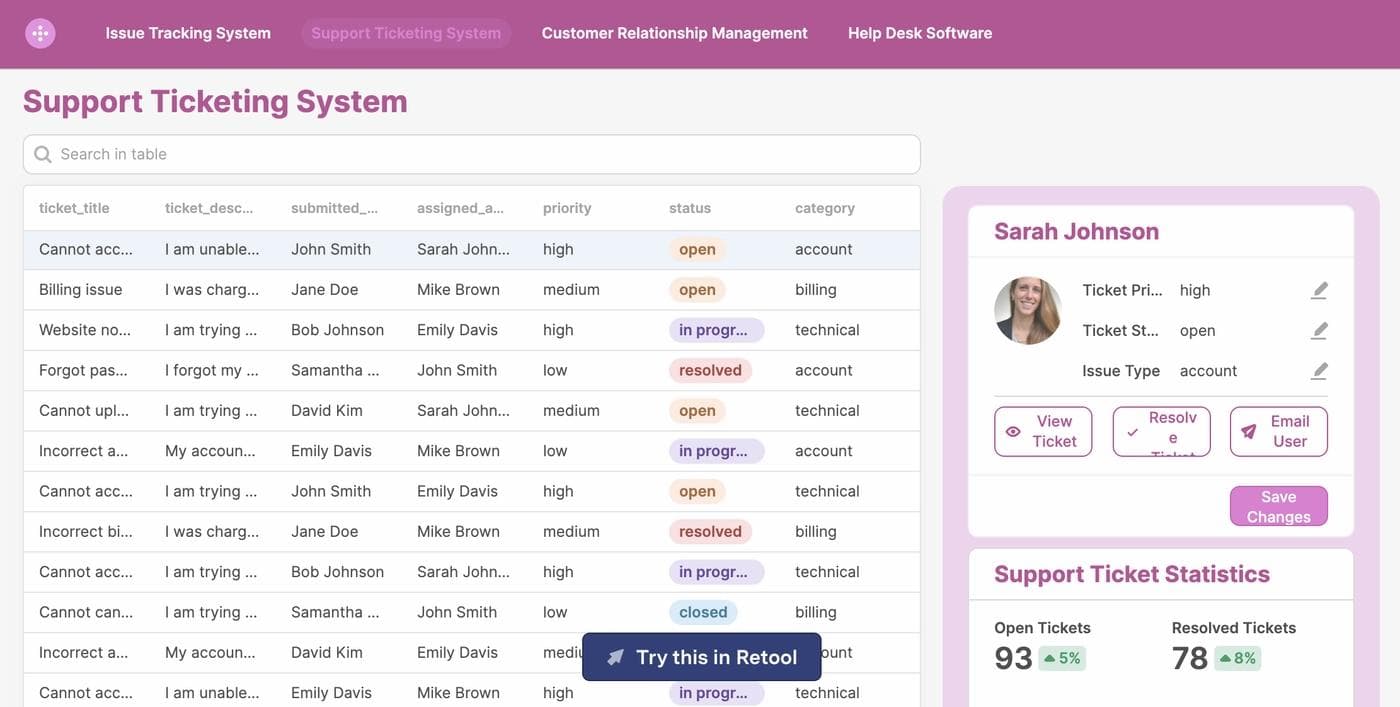
Analyzing call center data can be crucial to helping a customer support engine run smoothly. This data can offer insights into how to boost performance, coach CS team members and call center operators, and increase customer satisfaction.
A robust call center analytics dashboard can provide the information CS leads need to make data-driven decisions. With this dashboard, you can access a comprehensive dataset to quickly identify and act on areas for improvement.
Start with a call center analytics dashboard template and customize your ideal view of call volume trends, inbound versus outbound calls, and agent performance metrics. Then, drill down into call analytics from escalation rate to successful resolution in any given date range for detailed insights.
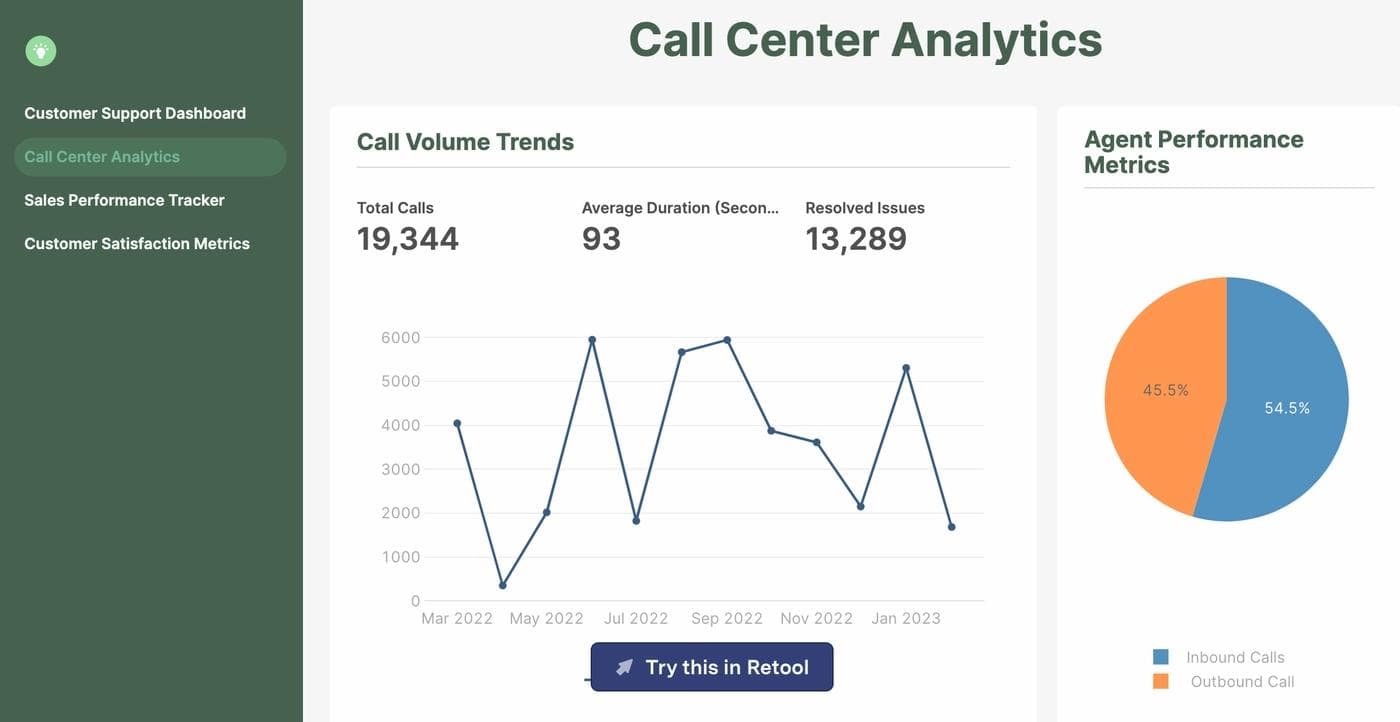
Zendesk users rejoice: A customizable Zendesk dashboard with a user-friendly interface makes it easy to go a few levels deeper with your customer support data than is currently possible in Zendesk’s native reporting.
Using a Zendesk dashboard can enable support teams to collate, manage, and analyze ticket data; track customer support metrics; gain valuable insights into ticket progress; and identify areas for improvement.
This flexible Zendesk analytics dashboard lets you build out a robust view of what’s really happening with open tickets, resolved issues, and average response time. Want a high-level list of tickets within a specified date range or other parameters? You can dig into ticket status, priority level, and customer issues or review a list of due dates for open tickets.
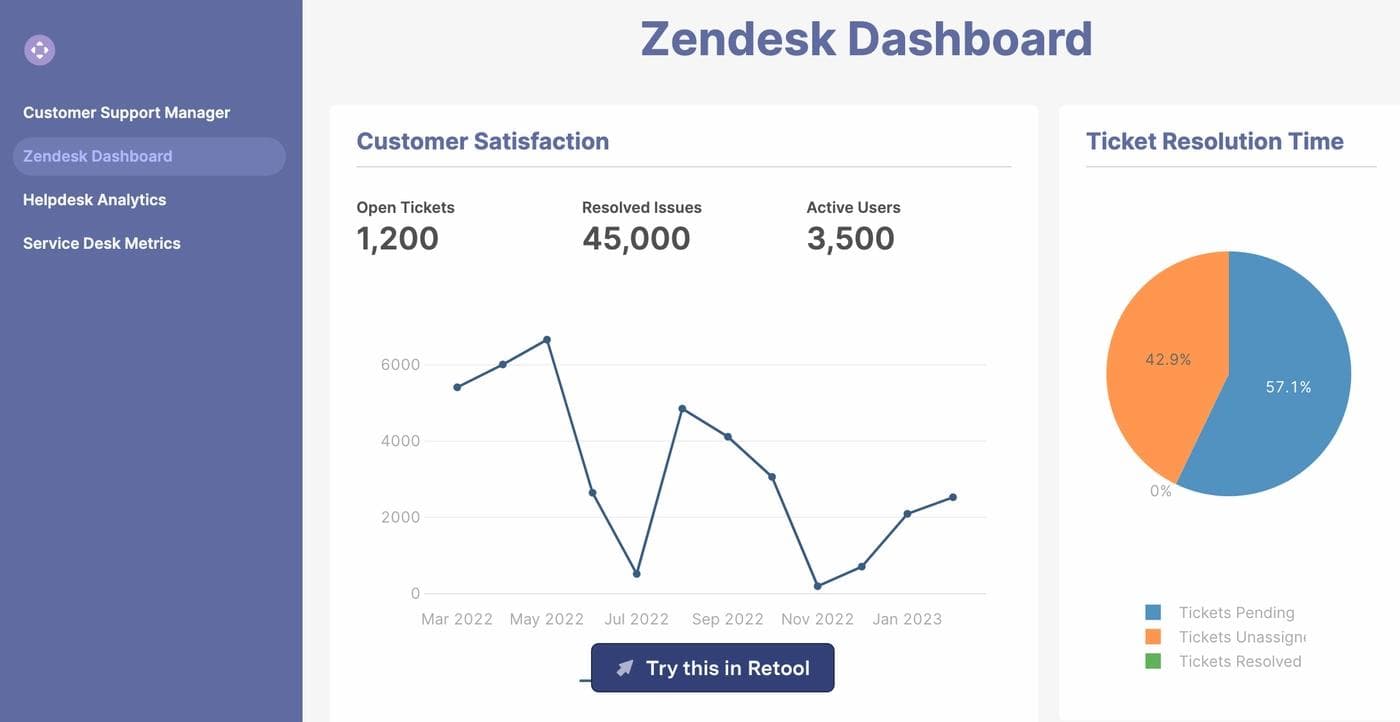
Net Promoter Score (NPS) is a key metric for measuring customer satisfaction and loyalty. An NPS dashboard can help you visualize and analyze your NPS data and make it easier to track.
How have responses changed over time? What’s happening in the market? With this tool, you can get to know your customer base on a deeper level, and make informed decisions based on what makes them tick, so you can achieve better outcomes.
This NPS dashboard template can help you get a meaningful view of customer types and customer satisfaction scores. Get to the heart of what’s happening with a deep dive into trends and comparisons.
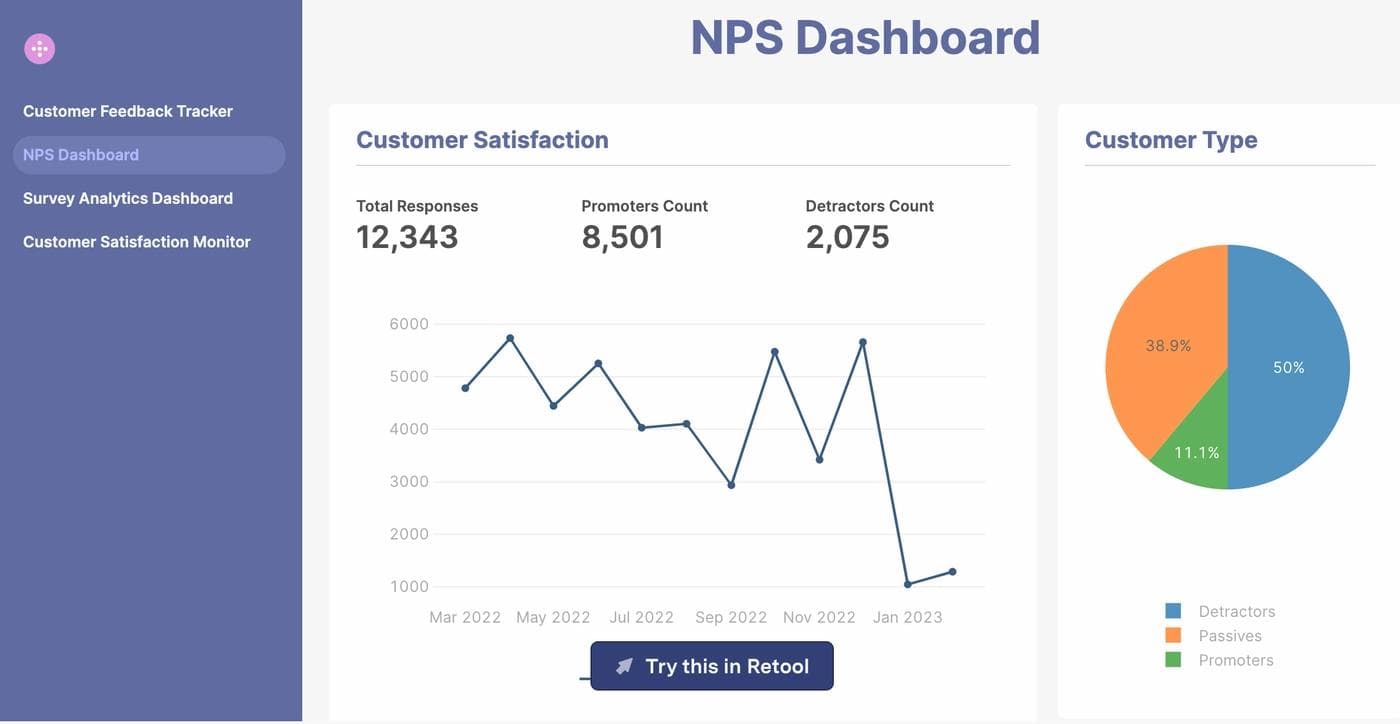
Addressing inefficiency in customer support isn’t just an issue for startups that don’t yet have the tools in place to formally manage customer service. It’s essential for scale-ups making tooling decisions as they work out the kinks in their growing support systems and try to smoothly support new products and markets. And for enterprise-scale organizations—where support teams often rely on outdated, homegrown tools and legacy systems—it’s critical.
A resourced, efficient support team is well-positioned to keep customers satisfied and engaged and to gather in-the-trenches feedback that allows you to more quickly identify and remedy gaps in your product. Internal tools that automate away inefficiency and support streamlined workflows can help your team avoid frustrating roadblocks, reduce wasted time, and return to delivering value for your customers.
Using templates to build custom internal tooling can make the impossible possible for time-strapped dev teams… And finally fulfill the banner item on the support team’s wish list.
Ready to explore how better tooling could improve your CS team’s workflows and save your software developers time? Explore how Retool works for customer support, or book a demo today. Looking to build and leverage secure AI-powered apps and workflows? Check out Retool AI.
Reader



